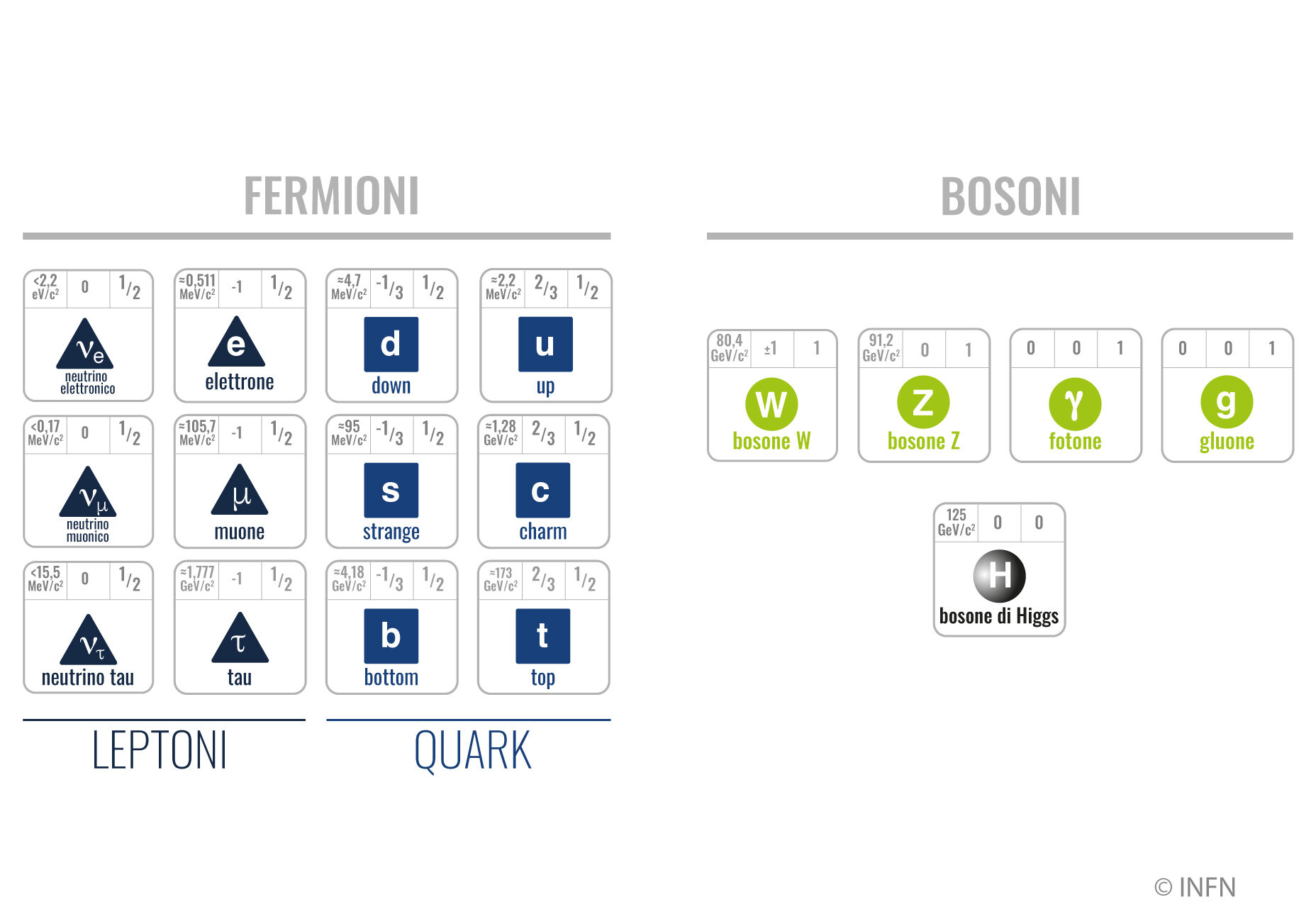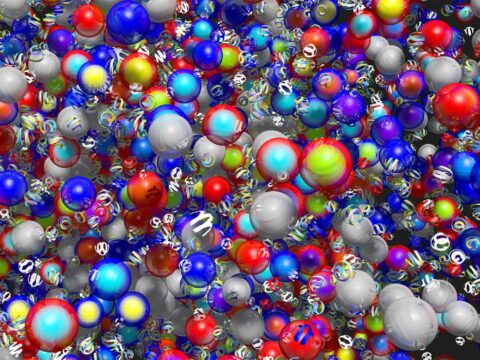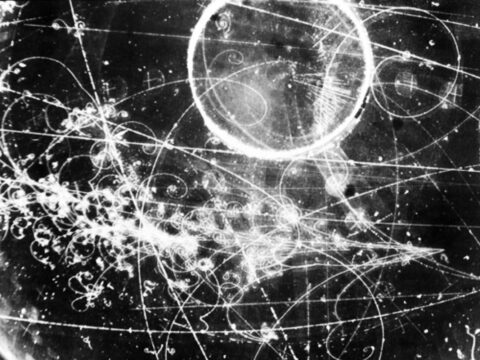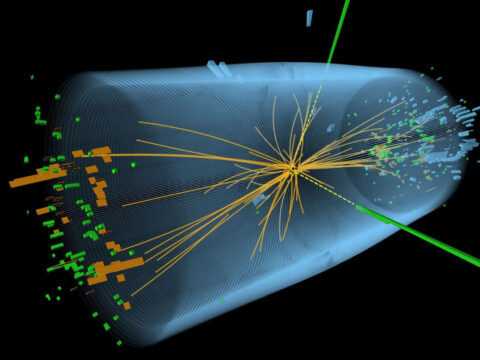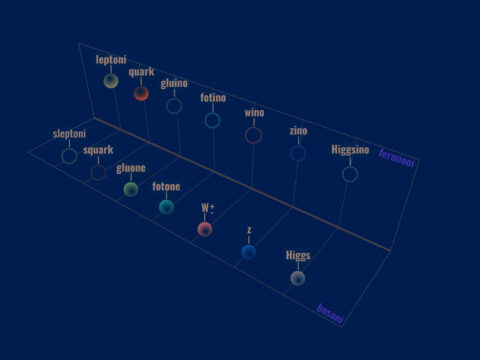There are twelve particles that make up matter and they have a spin equal to 1/2 and belong to the category of fermions (in honour of Enrico Fermi). The force particles have a spin equal to 1 and belong to the category of bosons (in honour of the Indian physicist Satyendranath Bose). The particles that constitute known matter are divided into two groups: quarks (there are six of these: up, down, strange, charm, bottom, top) and leptons (six, again: electron, muon, tau, and the three corresponding neutrinos).There are three forces described by the Standard Model: the electromagnetic force, the strong force, and the weak force. These are generated by the exchange of mediator particles: photons, W bosons (which are of two types W+ and W-), Z bosons, and gluons (of which there are eight different types). The three bosons W+, W-, and Z were discovered in 1983 by the UA1 collaboration, led by Carlo Rubbia, at CERN’s SPS accelerator. The fourth force of nature, gravity, is not included in the Standard Model; it is very small as an interaction between particles and can be ignored at the energies accessible to accelerators.
